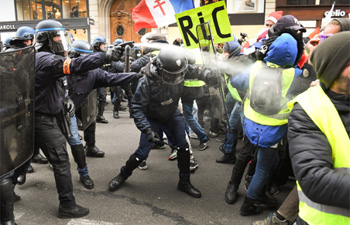
30 May 2011
“Ways have to be found to curb the potential loss of life that can occur when peaceful protest turns violent, or excessive use of force is exerted by the authorities” said the Special Rapporteur on Extrajudicial, Summary or Arbitrary Executions, Christof Heyns. “The challenge is to ensure that steps are taken to avert situations where violence and attendant losses of life occur”
In his first report to the Human Rights Council, Heyns examines demonstrations and the use of excessive force by the police during public gatherings. He assesses the domestic laws of 76 countries and makes recommendations on possible reforms at the national, regional and international levels.
Heyns’ report identifies steps that can be taken to better protect the right to life during protest – that is the lives of the protesters, bystanders and law enforcement officials. It highlights that protecting the right to life is tied to and imbedded in other rights, including the right of peaceful assembly. If the right to peaceful assembly is suppressed, demonstrations can easily escalate and turn violent. But given due recognition, confrontation can be defused and bloodshed can in many cases be averted.
It is generally accepted that the State has an obligation to maintain public order to prevent social disruption, damage to property, injury and loss of life. For this purpose, a clear set of international human rights law standards has been developed in respect to the use of lethal force by law enforcement officials. The study shows that domestically however, many countries do not meet the international standards.
“The recent events in the Arab world have lowered fear barriers around the world and will have an influence for many years to come. Moreover, demonstrations often coincide with elections, which have increasingly turned violent in recent years… There will be pressure, in particular in countries without established traditions of democracy and human rights, to manage demonstrations”, Heyns notes.
One of his recommendations is to elaborate clear basic principles for crowd control in order to set out the international law standards applicable to non-violent and violent, or legal and illegal demonstrations, with a special reference to the use of deadly force by the police during assemblies.
“The overreaching principle in respect of the use of deadly weapons by law enforcement officials should be self-defence,” said Heyns. “This should be reflected in any revision of the Code of Conduct for Law Enforcement Officials and the Basic Principles on the Use of Force and Firearms by Law Enforcement Officials and other instruments.”
